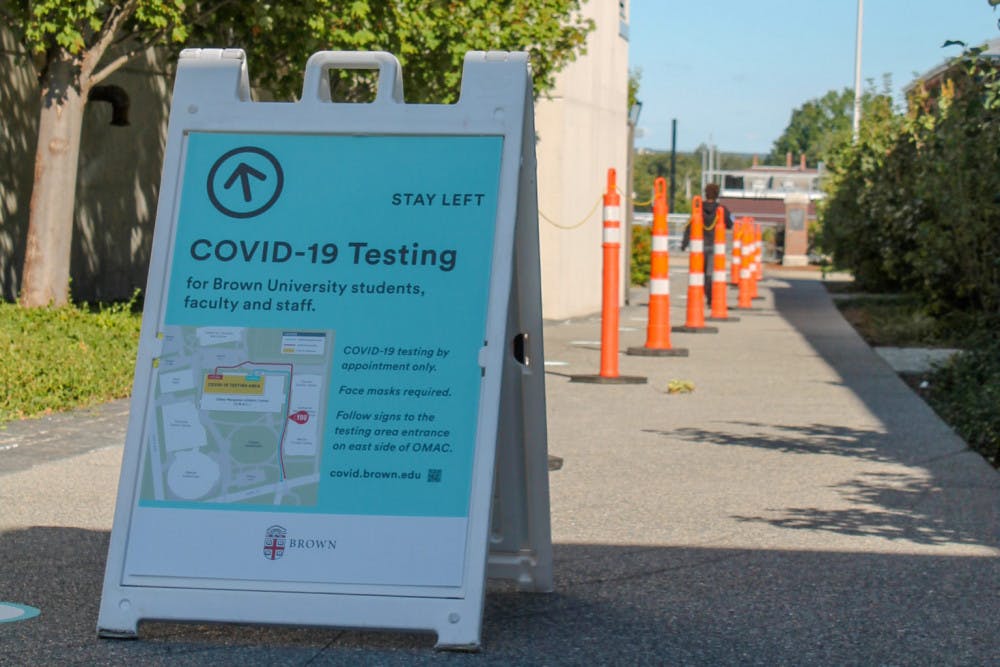The University saw a decrease in positive COVID-19 cases this week after a spike in numbers the previous week. Twenty community members tested positive between Feb. 28 and Mar. 6 in the asymptomatic testing program, compared to the 60 positive COVID-19 cases between Feb. 21 and 27, according to the Healthy Brown COVID-19 Dashboard.
“What’s encouraging is (that) we see declines, and sort of a steadying of (the) situation, as opposed to exponential growth,” Executive Vice President for Planning and Policy Russell Carey ’91 MA’06 said in a Mar. 5 conversation with The Herald . Still, Carey expressed caution: The past two weeks have shown that the situation “can change quickly” in either direction, he said.
The spike in numbers from the previous week occurred primarily on Feb. 23 and 24, when 13 and 18 students tested positive, respectively, in the asymptomatic testing program. Between 10 to 15 students also tested positive through symptomatic testing between Feb. 25 and Mar. 3, according to a March 5 COVID-19 community testing update.
“We are aware of, and certainly are following up on, reports of gatherings” around the time of the long weekend last month, Carey said. The spike occurred around a week after the long weekend, which is the expected time it would take for a person to test positive after exposure. “I don’t think it’s a coincidence,” he said.
Students who have tested positive identified their contacts to be composed of different, small groups unrelated to each other. “It’s not like one event where you can trace back 80 or 90 indiviudals to that one event,” Carey said. “My sense … is that it was a range of activities in that time period that led to increased positivity in students.”
A “significant number of students” were released from quarantine this week, Carey said, which includes students who were identified as contacts of those who tested positive following the long weekend. During the minimum 10-day period in quarantine, on-campus students must test negative twice and exhibit no symptoms in order to return to their original housing. Off-campus students must follow the same protocol but are expected to quarantine in their own housing.
“We really encourage everybody … to be really candid and open in the contact tracing conversations,” Carey said. “It's really important to identify those contacts — not to get people in trouble, but (to) get people medical help and to protect against a really serious public health threat.”
Multiple variants of the virus that causes COVID-19 have been documented globally and appear to spread more rapidly than other variants, according to the Centers for Disease Control and Prevention. Seven cases of the B.1.1.7 variant have been reported in Rhode Island.
University Health Services is working with the state of Rhode Island to serve as a “sentinel site” which is testing a number of samples for the variant separately from the asymptomatic testing conducted at the Broad Institute, Carey said. There have been “no reports” of variants identified through this kind of testing so far.
The Broad Institute is currently working to expand the capacity to test for variants through the asymptomatic testing program, Carey added.
The University is continuing to distribute additional masks at testing sites, The Herald previously reported, though it has faced some challenges in maintaining enough supplies to last the whole day.
The University is also working to “increase the number of appointments that are available” to access the Jonathan Nelson ’77 Fitness Center “because we know there’s a lot of demand,” Carey said. Students have expressed frustrations in securing limited online reservations at the fitness center, The Herald previously reported.
Since the testing program began Aug. 24, the number of completed tests has now surpassed 250,000 tests, according to the dashboard.
“In terms of looking back over the last now six plus months,” the testing program has “really served Brown well, and it's enabled us to, even in these very changed circumstances, still have an in-person residential academic experience,” Carey said. “That was the goal from last spring.”

ADVERTISEMENT




